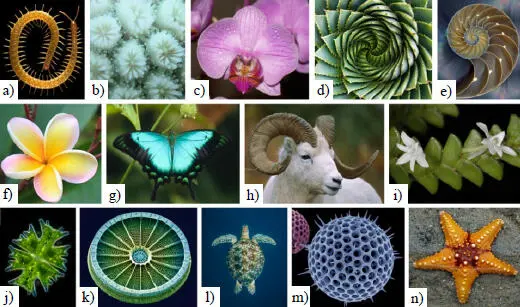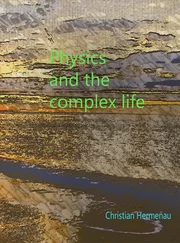Systematics and the Exploration of Life
Здесь есть возможность читать онлайн «Systematics and the Exploration of Life» — ознакомительный отрывок электронной книги совершенно бесплатно, а после прочтения отрывка купить полную версию. В некоторых случаях можно слушать аудио, скачать через торрент в формате fb2 и присутствует краткое содержание. Жанр: unrecognised, на английском языке. Описание произведения, (предисловие) а так же отзывы посетителей доступны на портале библиотеки ЛибКат.
- Название:Systematics and the Exploration of Life
- Автор:
- Жанр:
- Год:неизвестен
- ISBN:нет данных
- Рейтинг книги:3 / 5. Голосов: 1
-
Избранное:Добавить в избранное
- Отзывы:
-
Ваша оценка:
- 60
- 1
- 2
- 3
- 4
- 5
Systematics and the Exploration of Life: краткое содержание, описание и аннотация
Предлагаем к чтению аннотацию, описание, краткое содержание или предисловие (зависит от того, что написал сам автор книги «Systematics and the Exploration of Life»). Если вы не нашли необходимую информацию о книге — напишите в комментариях, мы постараемся отыскать её.
Systematics and the Exploration of Life — читать онлайн ознакомительный отрывок
Ниже представлен текст книги, разбитый по страницам. Система сохранения места последней прочитанной страницы, позволяет с удобством читать онлайн бесплатно книгу «Systematics and the Exploration of Life», без необходимости каждый раз заново искать на чём Вы остановились. Поставьте закладку, и сможете в любой момент перейти на страницу, на которой закончили чтение.
Интервал:
Закладка:
Benyus, J.M. (1997). Biomimicry: Innovation Inspired by Nature . Harper Perennial, New York.
Bouchet, P. (2006). The magnitude of marine biodiversity. In The Exploration of Marine Biodiversity: Scientific and Technological Challenges , Duarte, C.M. (ed.). Fundacion BBVA, Bilbao, Spain, 31–62.
Caesar, M., Grandcolas, P., and Pellens, R. (2017). Outstanding micro-endemism in New Caledonia: More than one out of ten animal species have a very restricted distribution range. PLOS One , 12(7), e0181437.
Dobzhansky, T. (1973). Nothing in biology makes sense except in the light of evolution. The American Biology Teacher , 35, 125–129.
Gargominy, O., Tercerie, S., Régnier, C., Ramage, T., Schoelinck, C., Dupont, P., and Poncet, L. (2014). TAXREF v8.0, référentiel taxonomique pour la France : méthodologie, mise en œuvre et diffusion. SPN report, 42.
Grandcolas, P. (2017). Loosing the connection between the observation and the specimen: A by-product of the digital era or a trend inherited from general biology? Bionomina , 12, 57–62.
Grandcolas, P. (2018). The view of systematics on biodiversity. In Biodiversity and Evolution , Grandcolas, P. and Maurel, M.-C. (eds). ISTE Ltd, London and John Wiley & Sons, New York, 29–38.
Hassanin A., Grandcolas P. & Veron G. (2020). Covid-19: Natural or anthropic origin? Mammalia , 000010151520200044.
Hawksworth D.L. and Lücking R. (2017). Fungal Diversity Revisited: 2.2 to 3.8 Million Species. In The Fungal Kingdom , Heitman J, Howlett BJ, Crous PW, Stukenbrock EH, James TY and Gow NAR (eds). American Society for Microbiology, Washington, DC, 79–95.
Jenner, R.A. (2006). Unburdening evo-devo: Ancestral attractions, model organisms, and basal baloney. Development Genes and Evolution , 216, 385–394.
Justine, J.L., Winsor, L., Gey, D., Gros, P., and Thévenot, J. (2020). Obama chez moi ! The invasion of metropolitan France by the land planarian Obama nungara (Platyhelminthes, Geoplanidae). PeerJ , 8, e8385.
Konstantinidis, K.T., Rosselló-Móra, R., and Amann, R. (2017). Uncultivated microbes in need of their own taxonomy. The ISME Journal , 11, 2399–2406.
Le Guyader, H. (2018). Classification et évolution . Le Pommier, Paris.
Linnaeus, C. (1758). Systema Naturae per regna tria naturae, secundum classes, ordines, genera, species, cum characteribus, differentiis, synonymis, locis , 10th edition, volume 1. Laurentii Salvii, Holmiae, Stockholm.
Mahner, M. and Bunge, M. (1997). Foundations of Biophilosophy . Springer, Berlin.
Maurel, M.-C. (2018). À la frontière du vivant: les viroïdes [Online]. The Conversation . Available: https://theconversation.com/a-la-frontiere-du-vivant-les-viro-des-90500.
May, R.M. (1988). How many species are there on earth? Science , 241(4872), 1441–1449.
Mayr, E. (1982). The Growth of Biological Thought: Diversity, Evolution, and Inheritance . Harvard University Press, Cambridge.
Montévil, M. (2019). Measurement in biology is methodized by theory. Biology & Philosophy , 34(3), 35.
Montévil, M., Mossio, M., Pocheville, A., and Longo, G. (2016). Theoretical principles for biology: Variation. Progress in Biophysics and Molecular Biology , 122, 36–50.
Mouillot, D., Bellwood, D.R., Baraloto, C., Chave, J., Galzin, R., Harmelin-Vivien, M., Kulbicki, M., Lavergne, S., Lavorel, S., Mouquet, N., Paine, C.E.T., Renaud, J., and Thuiller, W. (2013). Rare species support vulnerable functions in high-diversity ecosystems. PLOS Biology , 11, e1001569.
Nicolas, V., Martínez-Vargas, J., and Hugot, J.P. (2017). Talpa aquitania sp. nov. (Talpidae, Soricomorpha), a new mole species from SW France and N Spain. Mammalia , 81(6), 641–642.
Pellens, R. and Grandcolas, P. (eds) (2016). Biodiversity Conservation and Phylogenetic Systematics: Preserving Our Evolutionary Heritage in An Extinction Crisis . Springer International Publishing, New York.
Troudet, J., Grandcolas, P., Blin, A., Vignes-Lebbe, R., and Legendre, F. (2017). Taxonomic bias in biodiversity data and societal preferences. Scientific Reports , 7, 9132.
de Vargas C., Audic S., Henry N. et al . (2015). Eukaryotic plankton diversity in the sunlit ocean. Science , 348, 1261605.
Vieites, D.R., Wollenberg, K.C., Andreone, F., Kohler, J., Glaw, F., and Vences, M. (2009). Vast underestimation of Madagascar’s biodiversity evidenced by an integrative amphibian inventory. Proceedings of the National Academy of Sciences of the USA , 106, 8267–8272.
Wilson, E.O. (ed.) (1988). Biodiversity . National Academies Press, Washington.
Introduction written by Philippe GRANDCOLAS and Marie-Christine MAUREL.
1
Symmetry of Shapes in Biology: from D’Arcy Thompson to Morphometrics
1.1. Introduction
Any attentive observer of the morphological diversity of the living world quickly becomes convinced of the omnipresence of its multiple symmetries. From unicellular to multicellular organisms, most organic forms present an anatomical or morphological organization that often reflects, with remarkable precision, the expression of geometric principles of symmetry. The bilateral symmetry of lepidopteran wings, the rotational symmetry of starfish and flower corollas, the spiral symmetry of nautilus shells and goat horns, and the translational symmetry of myriapod segments are all eloquent examples ( Figure 1.1).
Although the harmony that emanates from the symmetry of organic forms has inspired many artists, it has also fascinated generations of biologists wondering about the regulatory principles governing the development of these forms. This is the case for D’Arcy Thompson (1860–1948), for whom the organic expression of symmetries supported his vision of the role of physical forces and mathematical principles in the processes of morphogenesis and growth. D’Arcy Thompson’s work also foreshadowed the emergence of a science of forms (Gould 1971), one facet of which is a new branch of biometrics, morphometrics, which focuses on the quantitative description of shapes and the statistical analysis of their variations. Over the past two decades, morphometrics has developed a methodological framework for the analysis of symmetry. The study of symmetry is today at the heart of several research programs as an object of study in its own right, or as a property allowing developmental or evolutionary inferences. This chapter describes the morphometric characterization of symmetry and illustrates its applications in biology.

Figure 1.1. Diversity of symmetric patterns in the living world. For a color version of this figure, see www.iste.co.uk/grandcolas/systematics.zip
COMMENTARY ON FIGURE 1.1. – a) Centipede (C. Brena); b) corals (D. Caron); c) orchid (flowerweb); d) spiral aloe (J. Cripps); e) nautilus (CC BY 3.0); f) plumeria (D. Finney); g) Ulysses butterfly (K. Wothe/Minden Pictures); h) capri (P. Robles/Minden Pictures); i) Angraecum distichum (E. hunt); j) desmidiale (W. Van Egmond); k) diatom (S. Gschmeissner); l) sea turtle (T. Shultz); m) radiolarian (CC BY 3.0); n) starfish (P. Shaffner).
1.2. D’Arcy Thompson, symmetry and morphometrics
A century has passed since the original publication of D’Arcy Thompson’s major work, On Growth and Form (1917). On the occasion of this centenary, several articles have celebrated his magnum opus, highlighting the originality and enduring influence of some of Thompson’s ideas in disciplines such as mathematical biology, physical biology, developmental biology and morphometrics (see Briscoe and Kicheva (2017), Keller (2018) and Mardia et al . (2018) for specific reviews of these various contributions).
Читать дальшеИнтервал:
Закладка:
Похожие книги на «Systematics and the Exploration of Life»
Представляем Вашему вниманию похожие книги на «Systematics and the Exploration of Life» списком для выбора. Мы отобрали схожую по названию и смыслу литературу в надежде предоставить читателям больше вариантов отыскать новые, интересные, ещё непрочитанные произведения.
Обсуждение, отзывы о книге «Systematics and the Exploration of Life» и просто собственные мнения читателей. Оставьте ваши комментарии, напишите, что Вы думаете о произведении, его смысле или главных героях. Укажите что конкретно понравилось, а что нет, и почему Вы так считаете.












